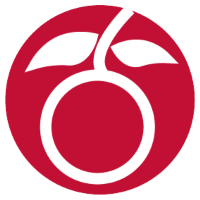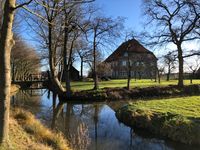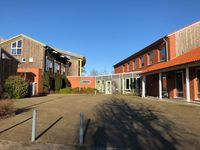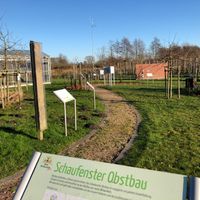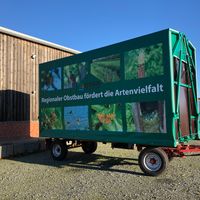53°30'31.3"N 9°44'02.3"E
The Esteburg
Showcase Orcharding of the Fruit Growing Centre and Fruit Research Station
On 28 March 2017, the "Showcase Orcharding" was opened at the ESTEBURG Fruit Growing Centre in Jork. The thematic trail in the Altes Land provides a unique insight into modern orcharding for those who want to know where apples & co actually come from.
The Altes Land has been known for its orcharding for centuries. The Showcase Orcharding shows how much has changed in 700 years. This theme park is a combination of environmental education and experiencing nature; it is intended to present, describe and explain the many aspects of commercial orchards in the Lower Elbe region.
Why are the plantation fruit trees so much smaller than in my own garden? Apart from honeybees, which insects are important for pollination? Why do orchardists also measure wind directions with modern weather stations? How are new apple varieties created? Why do you sprinkle water on fruit trees when it is freezing?
We will teach you what orcharding is about and how healthy and tasty apples are grown today. Upon request, a guided tour in the Showcase Orcharding includes various activities on specific topics. (A look into a bee colony, using scoop-nets at the irrigation pond, harvesting apples, identifying parasites and diseases).
Duration of the tour for school classes or groups: 2-2,5 h
Offer period: April to October
Prior registration is required:
ESTEBURG - Fruit-Growing Centre Jork
zentrale@esteburg.de
Phone: +49 4162 -60160
The Esteburg
The Esteburg is a former manor of the aristocratic Schulte family in Moorende. The manor was established at the beginning of the 17 th century when Dietrich Schulte (1564-1616), a Burgmann from Horneburg, who was Gräfe of the Altes Land since 1601 and who owned large estates along the Este, especially in Rübke, acquired various pieces of land in individual scattered locations, united them to form the manor and located his residence there.
Designating the estate a "Burg” (castle) follows a fashion of that time; a medieval castle in the actual sense did not exist here. Until the 19 th century, the owners were lords of the Horneburg court as well as owners of the patrimonial court of Rübke, whose court was located in Esteburg. Including the moor lands in Rübke, the estate was supposed to have been around 160 hectares in size.
The builder Dietrich Schulte came from one of the wealthiest aristocratic families in the Archbishopric of Bremen. The rich economic basis enabled him to build an outstanding, representative manor house, which is unique among the aristocratic manors in the Altes Land and is one of the most important rural secular brick buildings of its time in north-west Germany. The barbican was built in 1607, a 38 metres long Fachhallenhaus without the living part, which burnt down in 1983 and was replaced by a new farm building.
The massive house, the actual Esteburg, was attached in 1609-1611. The architectural style of the Dutch-influenced Nordic Mannerism is apparently based on façade designs in Bremen. The brick façade of the block-shaped, massive-looking manor house is decorated with sandstone ornaments, such as cornices, sandstone ashlars or embrasures. The outer appearance has been changed by alterations, especially in the roof area, where originally decorative gables with rich sandstone ornaments probably existed. The defensive appearance, which was emphasised by wide ditches, a gatehouse and formerly a drawbridge, underlined the aristocratic status of the owner. Hardly any of the original interior decoration has survived. Fireplaces from that period were sold to the Ludwig Roselius Museum in Bremen in the early 20 th century.
The manor belonged to the Schulte family for nine generations until 1911, interrupted only by a few years around the middle of the 17 th century when Helmuth Otto von Winterfeld, husband of Gertrud Schulte, owned it. After the death of Alexander von Schulte in 1899, his widow sold the estate, which still had around 50 hectares, in 1911.
Since 1964, the area is rented by the Jork Fruit Research Station, which maintains its experimental farm there and moved its headquarters to a new building established in 2000, together with the Obstbauversuchsring and the ÖON (Ökologischer Obstbau Niederelbe).
The historical building of the Esteburg is in private property.
